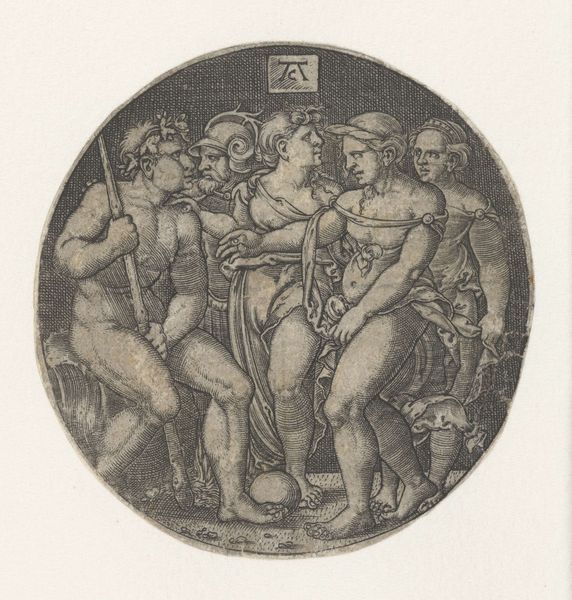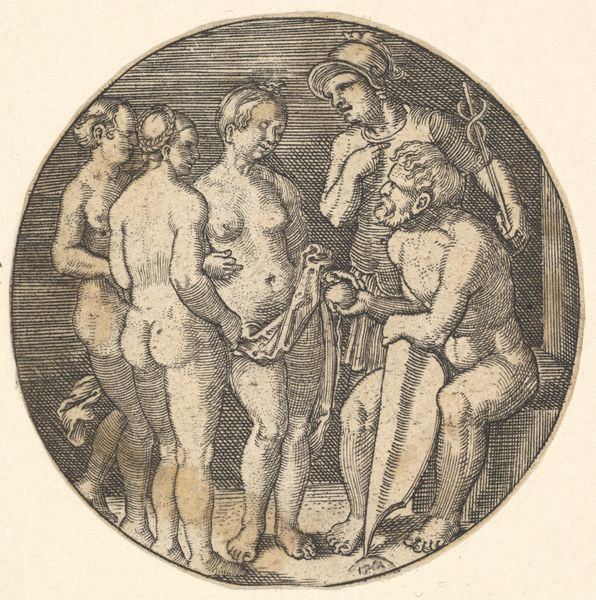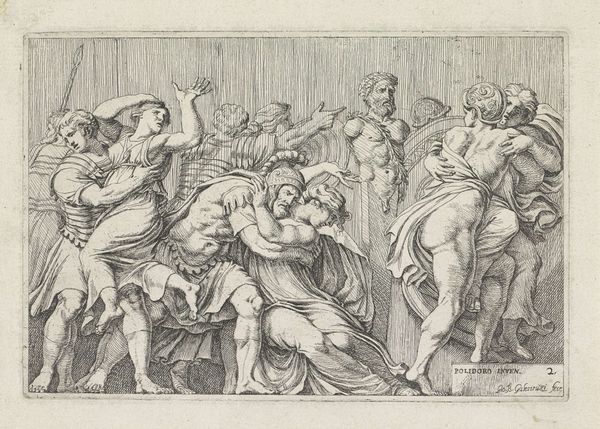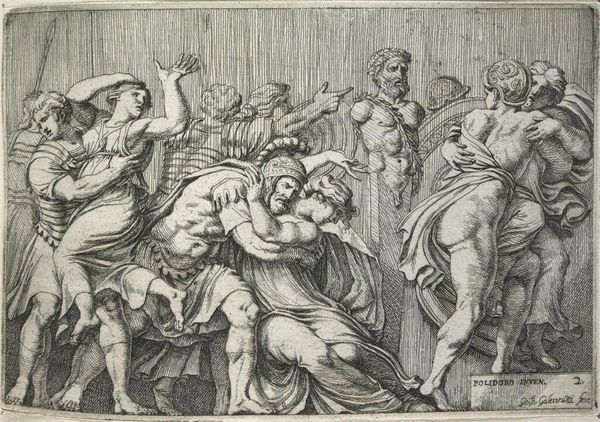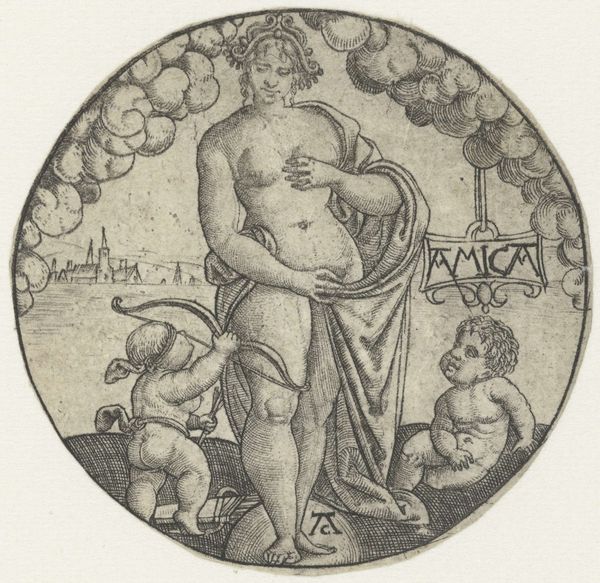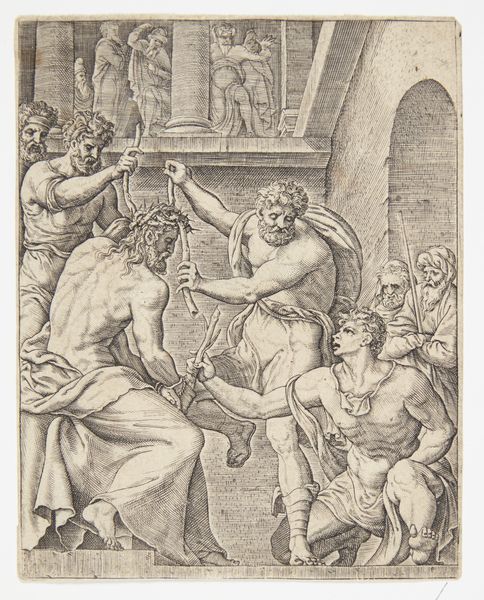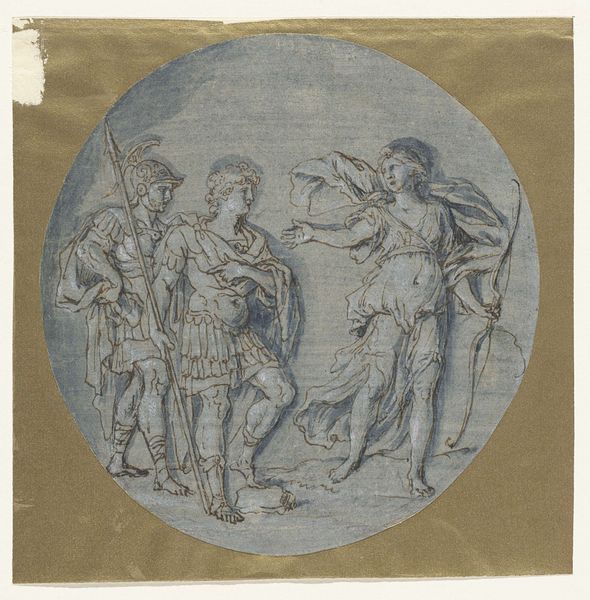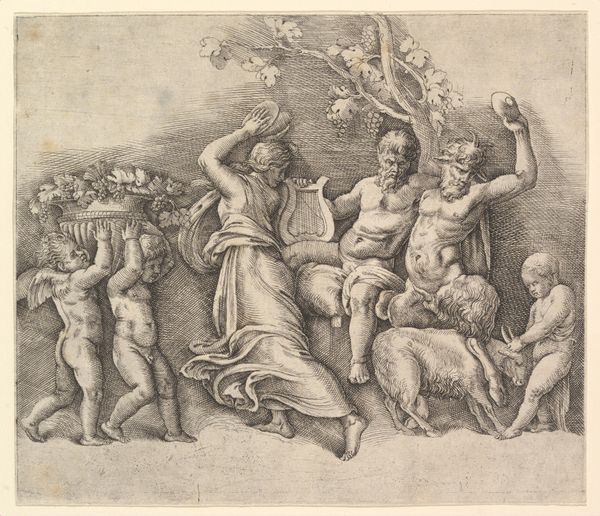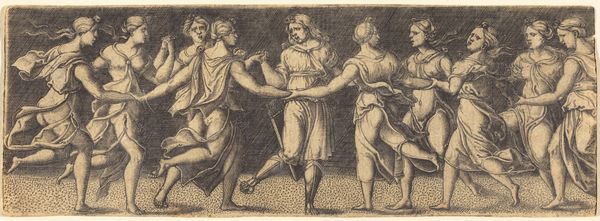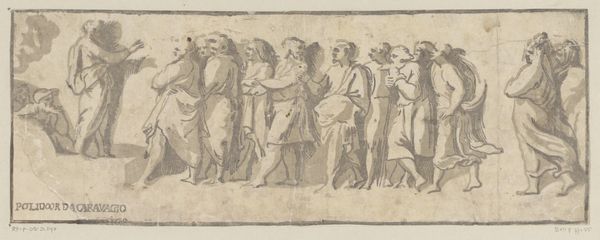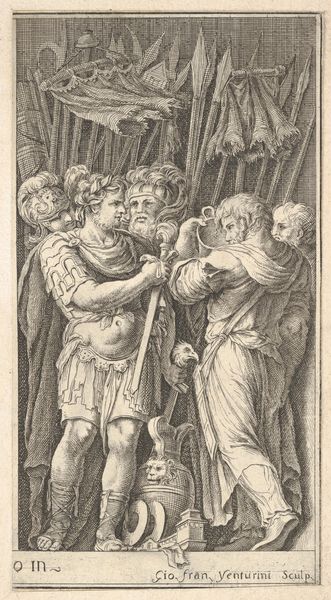
print, engraving
# print
#
figuration
#
history-painting
#
northern-renaissance
#
nude
#
engraving
Copyright: Rijks Museum: Open Domain
Sebald Beham made this print, “The Judgement of Paris,” in the 1500s. It's an engraving, meaning the image was carved into a metal plate, which was then inked and printed onto paper. The stark contrast between the black lines and white paper gives the scene a dramatic intensity. Look closely, and you’ll see how Beham used different densities of lines to create shading and volume. This wasn't just about artistic expression; it was a skilled craft, demanding precision and control. Engraving like this was crucial for disseminating images and ideas at the time. It allowed for relatively quick reproduction. Beham was part of a larger network of artisans, workshops, and publishers—a whole system of production and distribution. The print itself becomes a commodity, consumed and circulated in a growing market for art. So, next time you look at an engraving, remember it's not just an image, but also a product of skilled labor, technological innovation, and a complex social context.
Comments
No comments
Be the first to comment and join the conversation on the ultimate creative platform.
